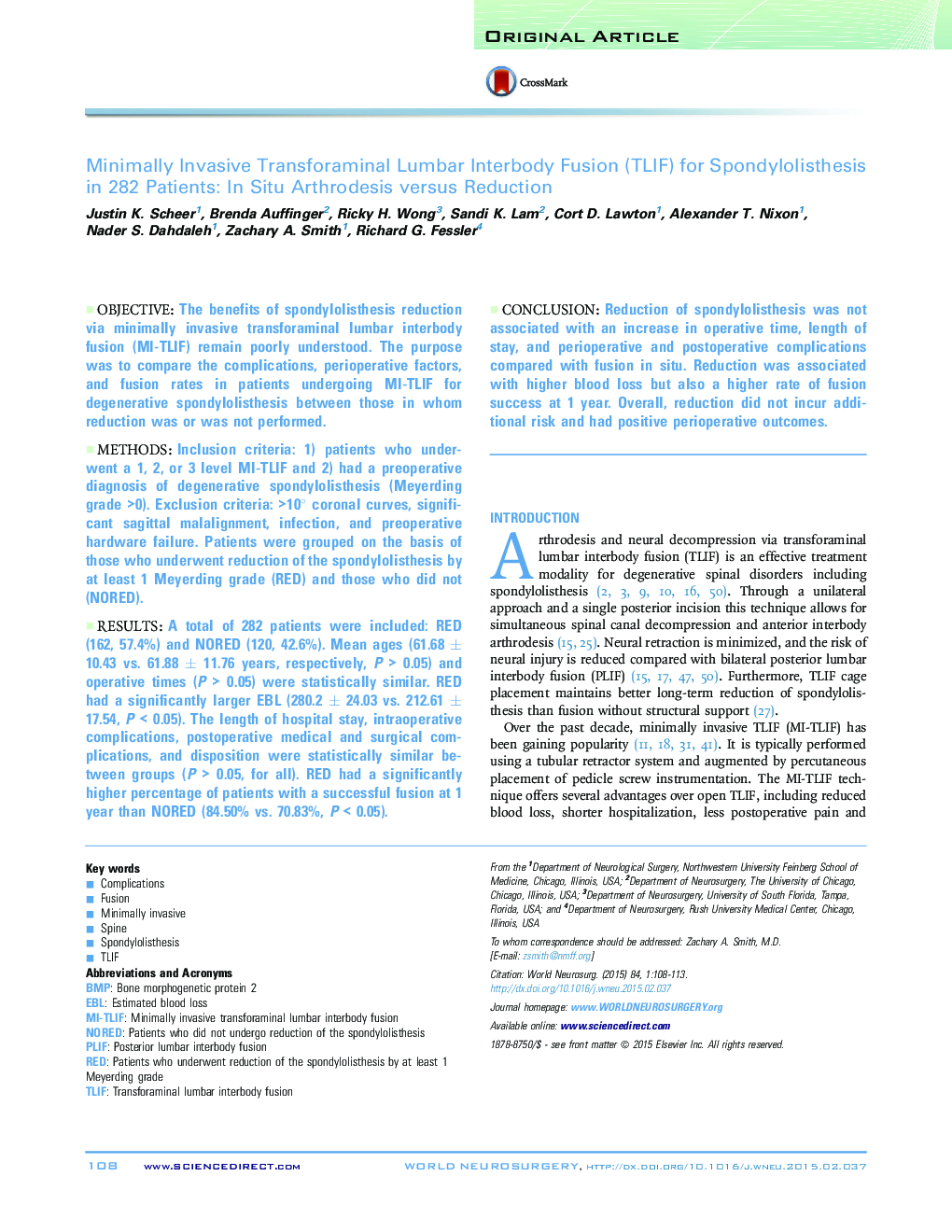| کد مقاله | کد نشریه | سال انتشار | مقاله انگلیسی | نسخه تمام متن |
|---|---|---|---|---|
| 3095070 | 1190901 | 2015 | 6 صفحه PDF | دانلود رایگان |

ObjectiveThe benefits of spondylolisthesis reduction via minimally invasive transforaminal lumbar interbody fusion (MI-TLIF) remain poorly understood. The purpose was to compare the complications, perioperative factors, and fusion rates in patients undergoing MI-TLIF for degenerative spondylolisthesis between those in whom reduction was or was not performed.MethodsInclusion criteria: 1) patients who underwent a 1, 2, or 3 level MI-TLIF and 2) had a preoperative diagnosis of degenerative spondylolisthesis (Meyerding grade >0). Exclusion criteria: >10° coronal curves, significant sagittal malalignment, infection, and preoperative hardware failure. Patients were grouped on the basis of those who underwent reduction of the spondylolisthesis by at least 1 Meyerding grade (RED) and those who did not (NORED).ResultsA total of 282 patients were included: RED (162, 57.4%) and NORED (120, 42.6%). Mean ages (61.68 ± 10.43 vs. 61.88 ± 11.76 years, respectively, P > 0.05) and operative times (P > 0.05) were statistically similar. RED had a significantly larger EBL (280.2 ± 24.03 vs. 212.61 ± 17.54, P < 0.05). The length of hospital stay, intraoperative complications, postoperative medical and surgical complications, and disposition were statistically similar between groups (P > 0.05, for all). RED had a significantly higher percentage of patients with a successful fusion at 1 year than NORED (84.50% vs. 70.83%, P < 0.05).ConclusionReduction of spondylolisthesis was not associated with an increase in operative time, length of stay, and perioperative and postoperative complications compared with fusion in situ. Reduction was associated with higher blood loss but also a higher rate of fusion success at 1 year. Overall, reduction did not incur additional risk and had positive perioperative outcomes.
Journal: World Neurosurgery - Volume 84, Issue 1, July 2015, Pages 108–113